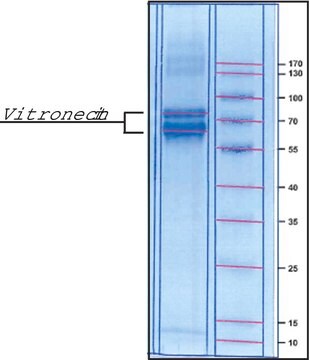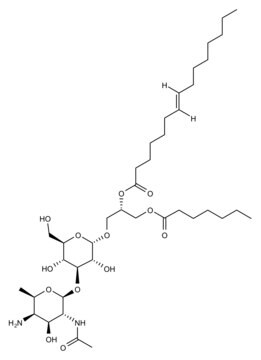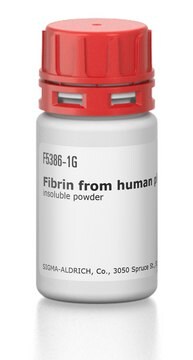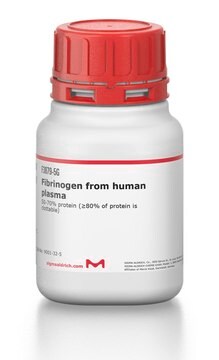V0132
Rat Vitronectin
from rat plasma, powder, suitable for cell culture
Sinonimo/i:
Serum spreading factor
About This Item
Prodotti consigliati
product name
Vitronectin from rat plasma, lyophilized powder, BioReagent, suitable for cell culture
Origine biologica
rat plasma
Livello qualitativo
Nome Commerciale
BioReagent
Forma fisica
lyophilized powder
PM
75 kDa
Confezionamento
pkg of 50 μg
tecniche
cell culture | mammalian: suitable
Copertura della superficie
0.1 μg/cm2
Solubilità
water: soluble 1.00 mL, clear, colorless
N° accesso UniProt
Condizioni di spedizione
dry ice
Temperatura di conservazione
2-8°C
Informazioni sul gene
rat ... Vtn(29169)
Descrizione generale
Applicazioni
Azioni biochim/fisiol
Componenti
Avvertenza
Nota sulla preparazione
Codice della classe di stoccaggio
11 - Combustible Solids
Classe di pericolosità dell'acqua (WGK)
WGK 3
Punto d’infiammabilità (°F)
Not applicable
Punto d’infiammabilità (°C)
Not applicable
Dispositivi di protezione individuale
Eyeshields, Gloves, type N95 (US)
Certificati d'analisi (COA)
Cerca il Certificati d'analisi (COA) digitando il numero di lotto/batch corrispondente. I numeri di lotto o di batch sono stampati sull'etichetta dei prodotti dopo la parola ‘Lotto’ o ‘Batch’.
Possiedi già questo prodotto?
I documenti relativi ai prodotti acquistati recentemente sono disponibili nell’Archivio dei documenti.
Articoli
3D cell culture overview. Learn about 2D vs 3D cell culture, advantages of 3D cell culture, and techniques available to develop 3D cell models
Cancer stem cell media, spheroid plates and cancer stem cell markers to culture and characterize CSC populations.
Extracellular matrix proteins such as laminin, collagen, and fibronectin can be used as cell attachment substrates in cell culture.
Il team dei nostri ricercatori vanta grande esperienza in tutte le aree della ricerca quali Life Science, scienza dei materiali, sintesi chimica, cromatografia, discipline analitiche, ecc..
Contatta l'Assistenza Tecnica.






